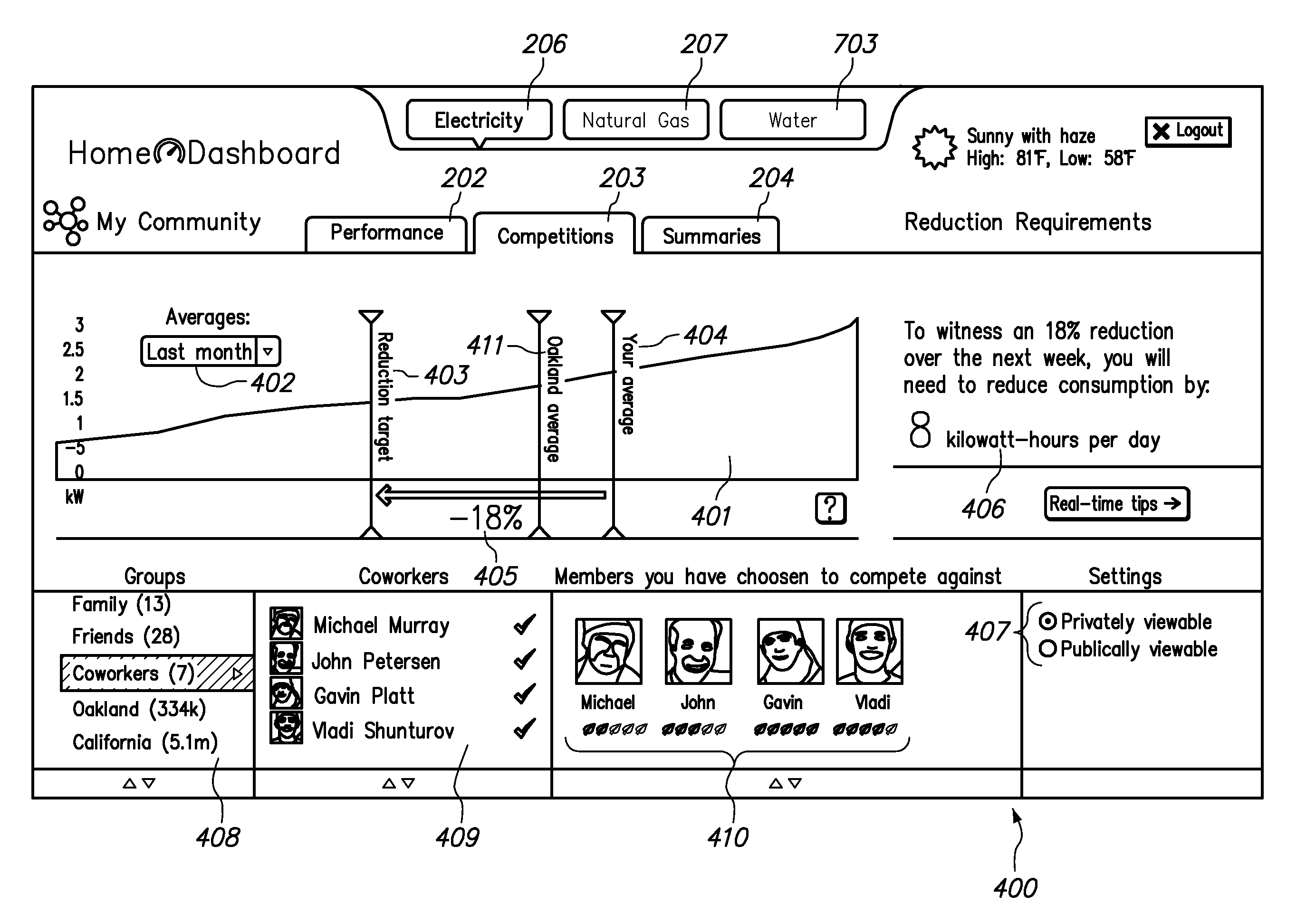Collecting, sharing, comparing, and displaying resource usage data
a resource usage and data technology, applied in the field of collecting, sharing, comparing, and displaying data, can solve the problems of limited feedback, negative environmental consequences of use, and inability to compare, and achieve the effect of facilitating comparison
- Summary
- Abstract
- Description
- Claims
- Application Information
AI Technical Summary
Benefits of technology
Problems solved by technology
Method used
Image
Examples
Embodiment Construction
[0046]As mentioned above, the description uses the terms “user”, “customer”, and “entity” interchangeably to refer to either an individual user or a group of users. A “user”, “customer”, or “entity” may therefore include any or all of an individual user, household, company, organization, or any definable groups (which may be defined according to any relevant criteria, such as for example social, economic, geographic, demographic, and / or other criteria). Groups may include individuals who do not directly pay utility bills, such as for example renters whose utilities are included in rent payments, employees of companies, and the like.
[0047]In the following description of embodiments of the present invention, numerous specific details are set forth in order to provide a more thorough understanding of the present invention. However, it will be apparent to one skilled in the art that the present invention may be practiced without one or more of these specific details. In other instances,...
PUM
 Login to View More
Login to View More Abstract
Description
Claims
Application Information
 Login to View More
Login to View More - R&D
- Intellectual Property
- Life Sciences
- Materials
- Tech Scout
- Unparalleled Data Quality
- Higher Quality Content
- 60% Fewer Hallucinations
Browse by: Latest US Patents, China's latest patents, Technical Efficacy Thesaurus, Application Domain, Technology Topic, Popular Technical Reports.
© 2025 PatSnap. All rights reserved.Legal|Privacy policy|Modern Slavery Act Transparency Statement|Sitemap|About US| Contact US: help@patsnap.com



